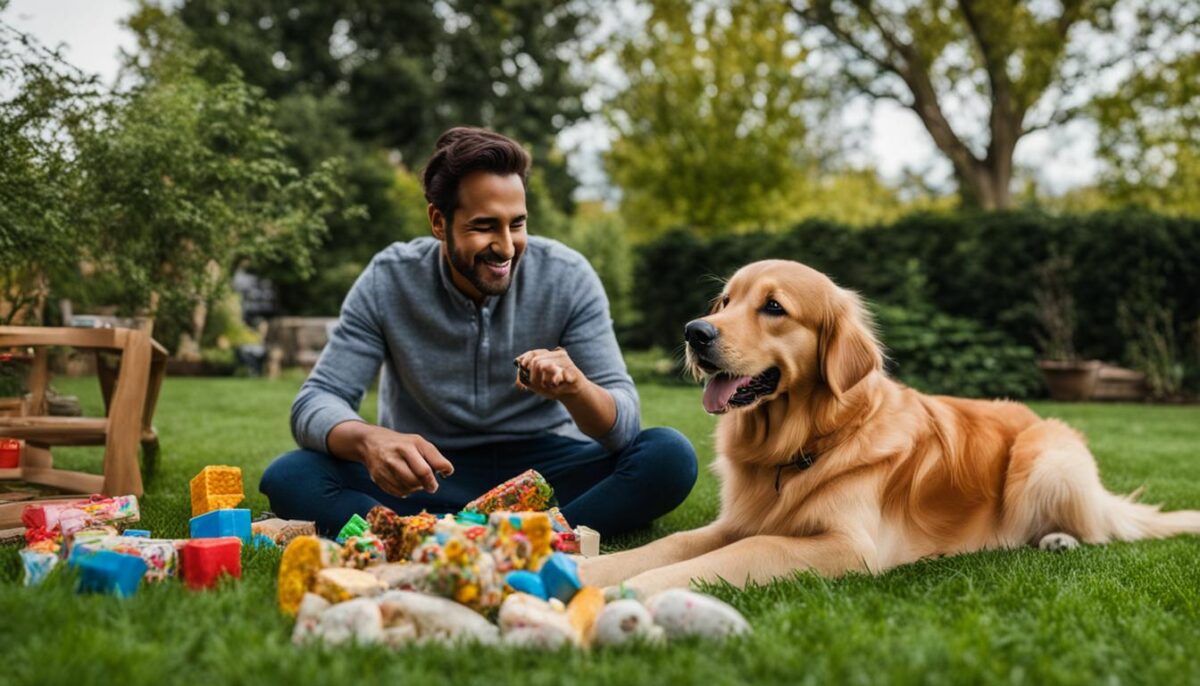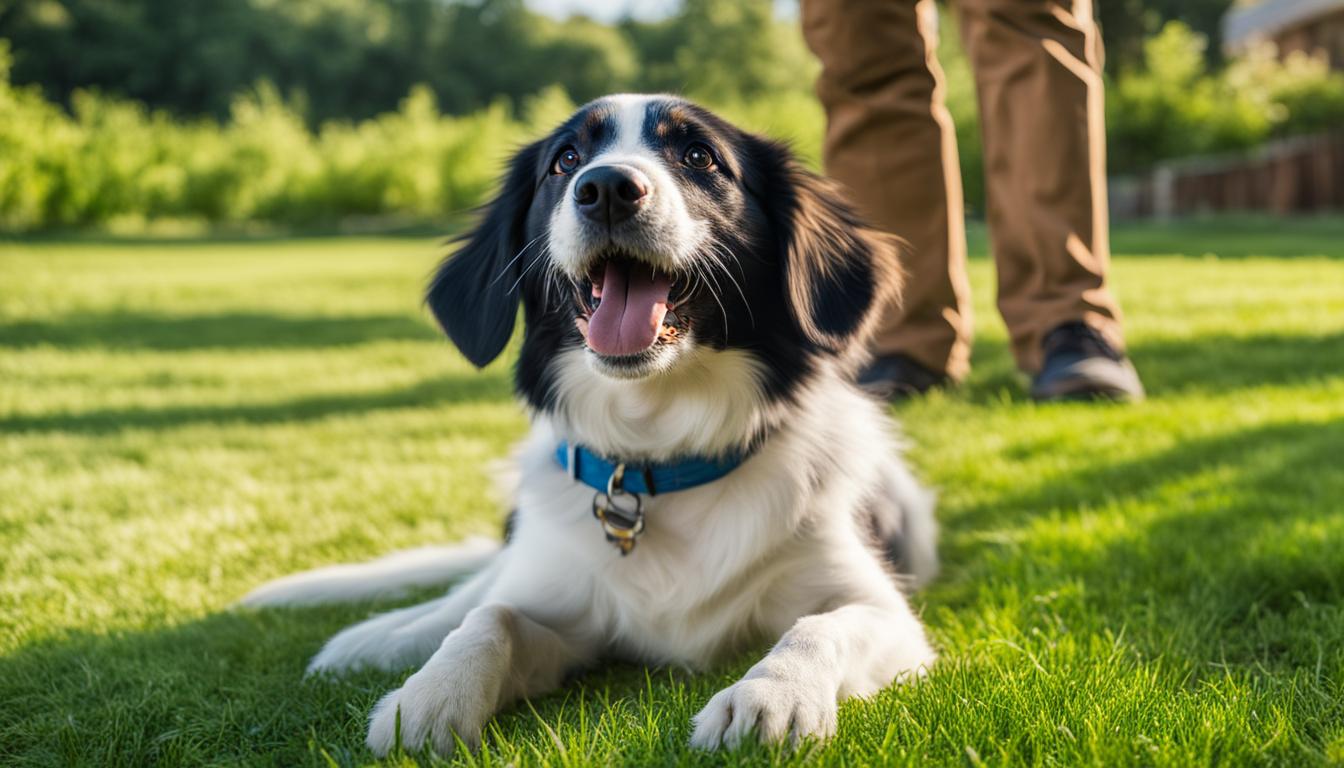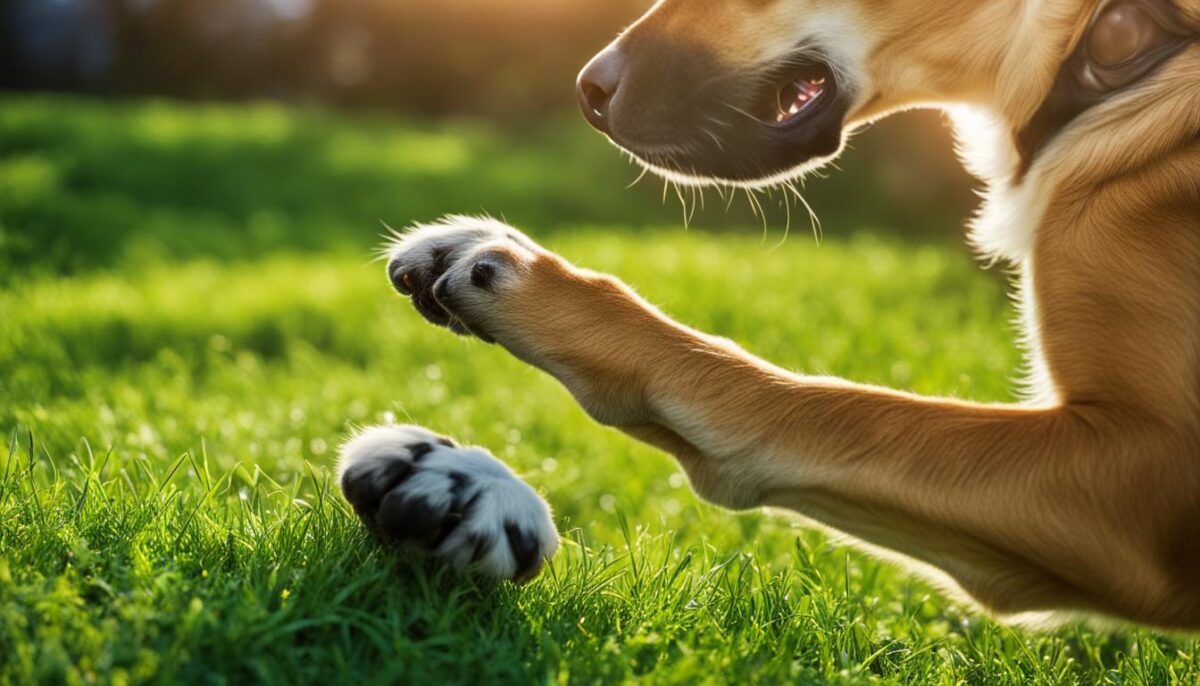Do you want to teach your furry friend a new trick? Learning ‘give paw’ is not only fun but also shows how smart your dog can be. When someone meets your dog, they often like to see this cool trick. It’s one of those easy dog tricks that you can teach your pet. You should make sure your dog knows the basics first, like ‘sit’. This helps your dog get ready to learn to give paw the right way. With just a little time, practice every day, and some yummy treats, your dog will be ready to show off in no time.
Key Takeaways
- Teach your dog basic commands before learning new tricks like ‘give paw’.
- Short practice sessions are best for keeping your dog’s attention.
- Use rewards to make learning fun and faster for your dog.
- Patience is important when teaching your dog any new skill.
- Show this trick to friends and watch them smile as your dog gives paw.
Why Teaching ‘Give Paw’ Is More Than Just a Trick
When your furry friend learns how to give paw, it’s not just a cute thing for them to do. It really shows off how smart they are and how good you are at dog obedience! Plus, it’s one of those quick dog tricks that dogs can pick up pretty fast.
Dogs can Learn ‘Give Paw’ Quickly
Dogs who know basic stuff like sitting when you ask can learn how to give paw even quicker. It all starts with simple commands they already know, which makes it easy for you and fun for them!
The Importance of Basic Obedience First
Before you start teaching paw tricks, it’s important that your doggy is already good at simple commands. When you say “sit” and they plop down, you know they’re ready for more like giving their paw to shake hands.
Shake Hands as a Social Skill
Shake hands isn’t just about impressing your friends. It’s also about socializing dogs. When they reach out their paw, it’s a friendly way to say hello to new buddies, both people and puppies.
So you see, teaching your dog to give paw is more than just a trick. It’s a cool way to show everyone that you’ve got one of those friendly dogs who loves to meet new friends. And it’s also a pretty neat party trick!
Preparation for Paw Training Success
Getting ready to teach your furry friend to ‘give paw’ is fun! Before you start, make sure you have yummy training treats. These goodies help your pet learn faster and make effective dog training a breeze. Also, setting up a good training environment is key. Now, let’s find out the best snacks and tips for training time.
Best Treats for Paw Training
What sort of treats should you pick? The best ones are tiny, tasty, and won’t make a mess. Imagine small pieces of cheese or bits of hot dogs. Yum! Your dog will love munching on these as rewards.
Training Sessions: Length and Frequency
Keep your training sessions short. Under 5 minutes is perfect. This way, your dog stays focused and doesn’t get grumpy or bored. Try to practice this a few times each day to help your dog recall the new trick.
Picking the Right Time and Place for Training
Choose a time when your dog seems peppy and not right after eating. Find a spot where it’s quiet and there are not too many things happening around. This helps your dog concentrate on learning. Make sure they’ve had a sip of water and a bathroom break before you begin!
| Treat Ideas | Session Tips | Best Training Spot |
|---|---|---|
| Small pieces of cheese | Short and fun | Quiet, comfy room |
| Little hot dog bits | Practice daily | Away from distractions |
| Crunchy dog biscuits | Keep it under 5 minutes | Familiar to your pet |
The Steps to Train Your Dog to Sit Upon Command
Teaching your furry friend to follow the sit command is a foundational aspect of dog sitting and obedience. It’s one of the first training gestures that you and your pet can enjoy learning together. Let’s dive into the steps to make this learning process a fun and rewarding experience.
Choosing the Right Gesture or Command
Before you begin, decide on a clear verbal cue like ‘sit’ or a hand signal. Dogs are smart, and they will quickly learn to associate this cue with the action you want them to take. You might hold out your hand, palm down, at a level where your dog can see it easily as the gesture to sit.
Practicing the Sit Command
To get started, hold a tasty treat close to your dog’s nose. Move your hand up, allowing your dog’s head to follow the treat and causing its bottom to lower. As soon as they’re in the sitting position, say “sit”, give them the treat, and share some loving praise. Repeat this several times in a row.
The Role of Patience and Consistency
Remember, patience and consistency are your best friends during training sessions. Not all dogs learn at the same pace. So, take it slow, be consistent with your commands, and always use positive reinforcement. Celebrate even the small wins as your dog masters the art of sitting on command!

| Step | Action | Tips |
|---|---|---|
| 1 | Choose command or gesture | Pick one verbal cue and/or gesture and use it consistently. |
| 2 | Lure with a treat | Move the treat above their head until their bottom touches the ground. |
| 3 | Say “sit” and reward | As soon as your dog sits down, say “sit,” give the treat, and praise them. |
| 4 | Practice repeatedly | Repeat the steps, and slowly phase out treats for just verbal praise. |
| 5 | Add distractions | Gradually introduce new environments and distractions to reinforce the command. |
With these steps, your dog will learn to sit upon command, and you will have laid a great foundation for further training gestures. Always end each session on a positive note, ensuring your dog will look forward to learning more with you!
How do you train a dog to give paw
Training your dog to do a paw trick is fun and a great way to bond. Let’s start with some positive reinforcement and a step-by-step dog training method. First, take a yummy treat to grab your pup’s attention. Show them a closed hand with the treat inside. The smell will make them curious.
Now, wait for your little friend to use a paw to try and get the treat. When they lift their paw, even a little, say “yes!” or “good!” and open your hand. Give them the treat and lots of love. This is their prize for being smart and trying hard.
Do this little game a few times every day. Each time, use a special word like “paw” before they move their paw. This way, they will start to connect the word with the action. You’re teaching them a secret handshake!
- Always start with the treat hidden in your closed fist.
- Watch and wait for your dog to make a move.
- Use happy words when they do it right.
- Practice many times, with your special “paw” word.
Soon, you won’t need a treat every time. Your pal will give you a paw just when you ask with your word. Try practicing in the yard, in the living room, and different spots. Changing places makes them even better at the trick!
| Steps | What To Do | What To Say |
|---|---|---|
| 1 | Use a treat to get attention | “Look what I have!” |
| 2 | Close hand with treat inside | … |
| 3 | Wait for paw movement | … |
| 4 | Open hand when paw is offered | “Yes! Good!” |
| 5 | Say the special word | “Paw” |
| 6 | Practice in different places | “Let’s try here!” |
Remember, be patient and give lots of love. Every dog learns at their own pace. With your help, they will master this fun trick and be ready to learn more. Happy training!
Conclusion
As we wrap up our journey in dog training, remember that every dog is special in how fast they learn. You’ve seen that getting your dog to give paw – shaking hands in human terms – is more than a neat party trick. It’s about understanding dog behavior and using training reinforcement to have an obedient, happy pup. Some dogs might catch on quickly, while others take a little longer, and that’s totally okay! What’s important is that you are patient and give your dog the time they need to get it right.
Understanding Your Dog’s Learning Curve
Your furry friend has their way of learning, just like people do. So, if it seems like your pup isn’t getting it right away, don’t worry. Each small step they take is progress. Keep your training short, sweet, and lots of fun. This way, your dog stays excited about learning something new and won’t see training as a chore. Plus, it makes for some quality time together!
Ensuring Enjoyable Future Training Sessions
Keeping things positive is key when teaching your dog. Use treats, play, and words that make them wag their tail in joy! If you both have fun, your dog will look forward to learning more tricks with you. Overcoming dog training obstacles gets easier when your dog’s tail wags in excitement at the mere sight of the training treats or hears your happy voice calling them to learn.
Navigating Challenges in Paw Training
Sometimes, training doesn’t go as planned, and you might face some challenges. Maybe your dog likes to use their mouth instead of their paw, or perhaps they’re just not in the mood. Don’t let that get you down. Just smile, give them a pat, and try again later. Always be kind and give lots of praise when they do well. This way, they learn that listening to you is the best thing ever!
FAQ
What are the basic steps to train my dog to give paw?
Start by ensuring your dog already knows the sit command. Next, choose your verbal cue (‘paw’, ‘shake’, or ‘give paw’) and present your closed fist with a treat inside to your dog. As they become interested, they may naturally paw at your hand. Reward this with the treat and praise, and repeat the process with the chosen verbal cue until your dog reliably offers their paw in response.
Why should my dog learn the ‘give paw’ trick?
Beyond being a fun party trick, ‘give paw’ helps in socializing your dog and can be a display of their obedience and intelligence. It’s also a simple way to strengthen the bond between you and your pet.
What kind of treats works best for paw training?
Treats that are appealing, non-crumbly, and easy to handle are best for paw training. Small pieces of cheese or hot dog are recommended because they hold their shape, which means less mess and less distraction for your dog.
How long and how often should paw training sessions be?
Keep the training sessions short, under 5 minutes, to maintain your dog’s attention and avoid frustration. Practice multiple times a day to reinforce the learning process.
What is the ideal time and environment for training my dog to give paw?
The best time for training is when your dog is alert and not immediately after a meal. Choose a quiet, distraction-free environment initially to allow your dog to focus solely on the training. Make sure your dog has access to water and has been to the toilet before you start the session.
How do I transition from using treats to just using verbal commands?
Gradually decrease the frequency of treat rewards as your dog becomes more accustomed to the verbal command. Start by rewarding every few successful attempts with treats and alternate with just praise until your dog responds to verbal cues alone consistently.
What are the common challenges in paw training, and how do I deal with them?
One common challenge is a dog using its mouth instead of its paw. Stay consistent and patient, and only reward the behavior you want to encourage. If your dog uses its mouth, don’t scold but rather ignore the behavior and wait for them to try with their paw, then provide positive reinforcement.
Should I practice the paw command in different settings?
Yes, practicing in different settings and with various distractions can reinforce the behavior in your dog. It ensures that your dog will obey the command regardless of the environment or distractions present.
How does my dog’s learning pace affect training?
Each dog learns at their own pace, so it’s important to set realistic expectations and be patient. Adjust your training sessions accordingly if you find that your dog learns slower or faster, and always try to keep the sessions enjoyable and positive.

